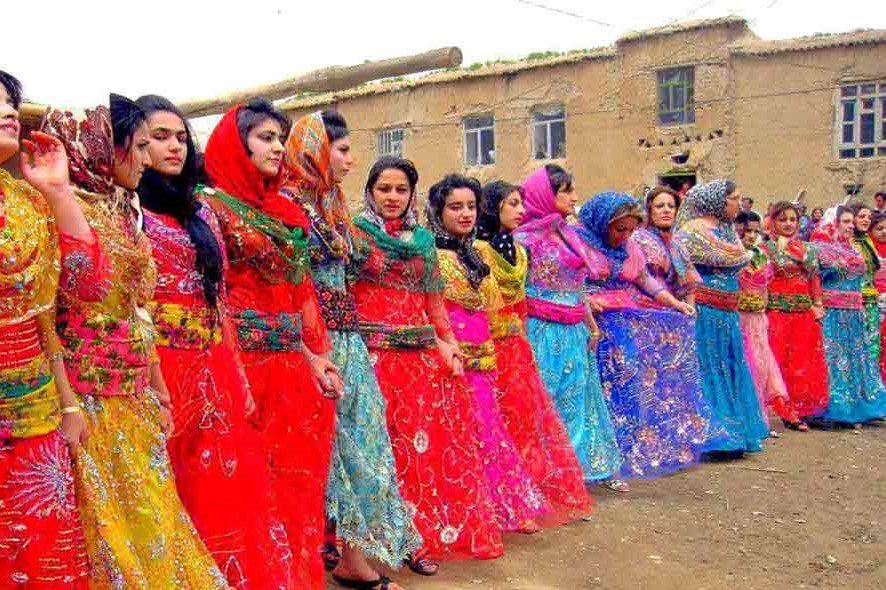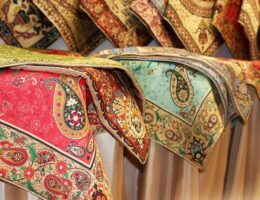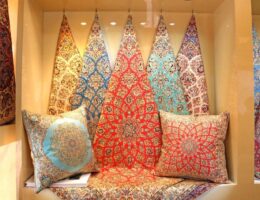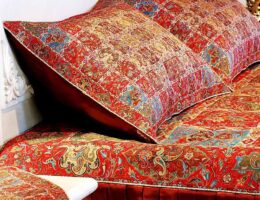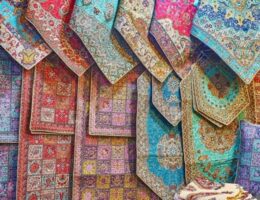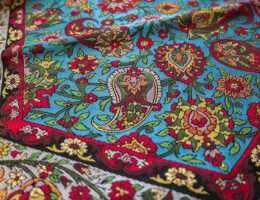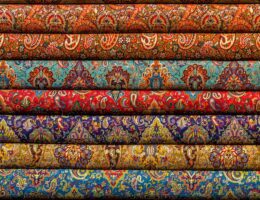IRAN ART EXHIBITION: TRADITIONAL IRANIAN CLOTHES ARE REALLY EYE-CATCHING
Iran as a multi-ethnic and multicultural society has a varied population dispersed in different parts of Iran, from north to south and west to east.
Even though the majority of Iranian are Persian, various ethnic groups exist in the country with their own language, tradition, costumes and clothes.
Due to diversity of Iranian ethnicity, Iranian people both men and women wear embroidered designs and colorful patterns.
Traveling to Iran presents you a wide range of clothes belonging to different cities or cultures in order to show the glorious Persian heritage, a prodigious beauty that penetrates your soul. Clothing is a vital issue from ancient era until now in the contemporary lifestyle. It is necessary to mention that religious believes have very important effects on choosing type of clothes especially in villages of Iran.
Traditional dress is a good reflection of history and costume which is still worn among different ethics. Although after the revolution of Iran, women are forced to wear loose-fitting dresses along with a head covering, still a variety of clothes is seen especially in villages and a great number of Iranian women are eager to follow fashion mainly in big cities like Tehran. Sophisticated and fabulous clothes are integral part of dressing among Iranian women as if they dream of being seen beautiful and charming in order to fulfill their desires.
Let’s have a review on Iranian clothes in order to immerse in the amazing beauty of dressing in Iran:
Kurds
The most important feature about clothes in Kurdistan, the western province in Iran, is the colorful clothes from top to bottom. The dress consists of colorful designs usually a long dress or gown, over which a vest or jacket is worn with colorful pants and belts or colorful shoes embroidered with stones or beads.
Jewelry is very commonplace and all women are eager to put on accessories regardless to age.
Dowry is an old culture in Iran that is still popular among Iranian people then wearing expensive jewelry among older women given them by their husband’s family as a large dowry, presents the glory and the pride of an old woman.
In Kurdish tribes, even though old women prefer to put on dark clothes in comparison to younger ones, wearing bright colored traditional gowns and dresses is very popular among younger women in Kurdish tribes.
But what about men?
IRAN ART EXHIBITION: Men wear plain shirts and mostly vests or jackets over their shirts. Baggy pants as traditional clothing for men with a large belt tied around the waist makes the clothes very attractive and eye-catching. Kurdish people, men and women choose different kinds of clothes not only in everyday life but also in parties, ceremonies or even weddings.
North of Iran
Now it is time of catching a glimpse at the culture of north of Iran as one of the most attractive tourist attractions in Iran, a region that is really beautiful in four seasons. In the spring you absorb the aroma of blossoms in different colors, mild breeze touches your skin as you dream of staying for a long time at the bench of Caspian sea. In autumn just immerse in amazing beauty of colorful trees and pleasant mind breeze.
As you are enjoying the nature of north of Iran, women and men pass the hectic day in paddy fields with traditional clothes suitable for the job.
Gilan is a famous province in north of Iran maybe named as green province.
Women do not like to wear black clothes just because of scenic beauty of nature.
It is interesting to mention that even in a funeral ceremony in north of Iran, women are not willing to wear black clothes and in order to show their sorrow they prefer to put on ragged customs.
The main clothes of Gilak women are Chadorkamar, Shaliteh, skirt, trouser,coat, robe (Kutah-Tuman),scarf, Lachak and short skin (Gerd-e Tuman). (The last one is used with traditional wide trousers narrowing of the ankle).
“Lachak” is another famous clothes that is a headdress like a hat, worn by old women.

IRAN ART EXHIBITION: Gilan is the place of one of the most important pre-historical sites of Iran, Marlik. The materials discovered here indicate the antiquity of using the jewelries with clothing and also the special form of clothes among the women of this region. Gilan is the northern province of Iran that has a pleasant weather, beautiful and generous nature; The factors influencing on all other cultural dimensions of its inhabitants. Therefore, the local clothing of this region is considered to be inspired by the nature in which not only the happy and brilliant colors show this relationship, but also the natural colors were the only materials used for colorizing these clothes until recently. The shiny red color and the horizontal colorful ribbons are the main indicators of Gilan women’s clothing. They wear a scarf named Mandil along with a hat that is decorated with coin embroidery in the forehead. They put on a typically white scarf over that. The dress of women is red and it has two slashes over which they wear a long folded Shaliteh. The skirt is decorated with horizontal colorful ribbons. They wear a vest over the dress that is also embroidered. It also should be said that three different clothes of Qasemabad, Talesh and Rasoukh are respectively related to three eastern, western and central parts of the province. Gilak men has a clothing composed of a dress, vest, dark pants named Cherodari, Qadak, Tang-e Tuman and Dij as well as a local footwear. They put on the felt hat and their dress is red and collarless. They tighten a shawl around their waist that is patterned. The mountain’s shepherds use a woolen hat named Koola and Shoola. A cloak named Chookha is popular among Gilan’s men and a footwear named Chamoosh. This footwear is made of leather and is very useful in mountainous regions. Charoogh, Orsi, Giveh, Galesh boot, boot and Chiktoot as well as a sandal named Katleh are among other footwear of Gilak men that is used based on the season and occasion. The pants of Gilan men are named Sholar and it is tight in legs.
Clothing of the Persian Gulf
The people on the shores of Persian Gulf wear distinctive types of dress concerning three provinces named; Khuzestan, Hormozgan and Bushehr.
Women’s clothing consists of dress, head covering,trousers and shoes.
Black scarf of thin silk wrapped round the head and fastened on the top with a metal pin is a common place head covering among women.
Some of women in south of Iran usually cover their face and it is completely different with the culture of people in the north of Iran.
Women in south of Iran are used to color their hands, it is famous as Hana in Persian and Arab culture. Then you can see a similarity between two cultures.
IRAN ART EXHIBITION: Men put on a small white or colored cap, over which a 2-meter-long cloth is wrapped around the body. Older men prefer to wear white and on the other hand, young men usually put on colored ones.
Wearing different kinds of shoes among men is very common in south of Iran such as Harza, malaki and Jufi.
